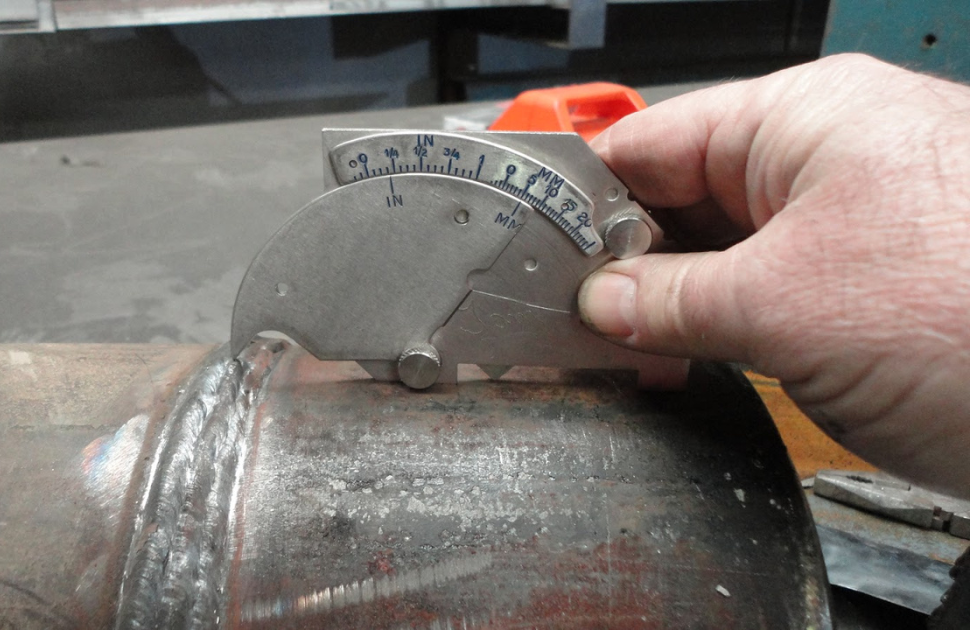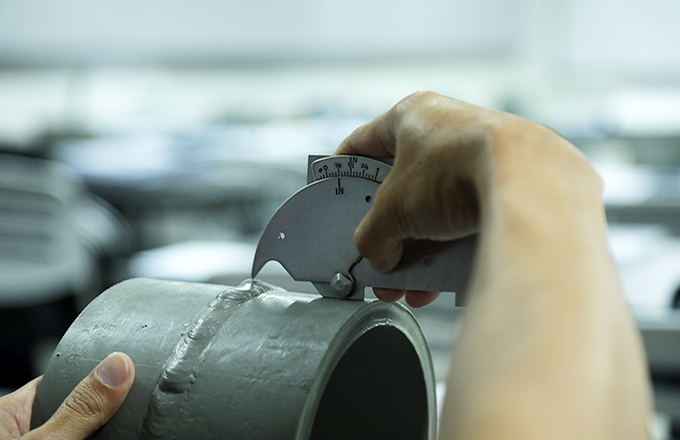Top-Rated Houston Welding Inspection Solutions for Industrial Specifications
The Necessary Function of Welding Examination: Comprehending the Procedures, Equipment, and Specification That Govern Top Quality Assessment in Welding Procedures
Welding examination is a crucial element of quality control in welding operations, ensuring the structural stability and safety and security of bonded assemblies. By using a variety of treatments, from pre-weld analyses to advanced non-destructive testing strategies, inspectors methodically evaluate weld high quality versus stringent industry standards. The devices made use of in these processes is important for identifying prospective defects that might compromise performance. Understanding the interaction between inspection methods and regulatory conformity elevates important questions about the obstacles faced in keeping these important procedures. What effects do these variables carry the total effectiveness of welding procedures?
Value of Welding Assessment
Welding evaluation is essential in ensuring the honesty and safety of welded frameworks, as it often functions as the final checkpoint before parts are put into solution. The relevance of this assessment depends on its capacity to identify possible flaws that might compromise the efficiency and longevity of welded joints. Provided the high stakes included, particularly in markets such as construction, aerospace, and auto, comprehensive examination processes are vital.
Welding defects can occur from numerous factors, including inappropriate strategies, poor equipment, or improper products. Failing to discover these concerns can lead to disastrous effects, including architectural failings, which might result in injury, death, and significant financial obligations. Welding inspection gives a systematic method to examine the top quality of welds, making certain compliance with sector criteria and governing requirements.
Moreover, reliable welding examination adds to enhancing overall efficiency by minimizing rework and guaranteeing that jobs stay on routine. By cultivating a culture of high quality assurance, organizations can likewise improve their credibility and client trust fund. Essentially, the importance of welding inspection can not be overstated, as it plays a critical role in protecting both human lives and investments in framework.
Key Inspection Procedures
A comprehensive approach to assessment treatments is necessary for making certain the top quality and dependability of welded joints. Efficient evaluation begins with pre-weld analyses, which consist of reviewing welding specifications, material buildings, and joint styles to recognize potential obstacles. This prep work phase develops a baseline for high quality expectations.
Throughout the welding process, in-process inspections are essential. Assessors keep an eye on specifications such as heat input, traveling rate, and electrode angle to make sure conformity with recognized standards. Aesthetic examinations are the very first line of protection, allowing the recognition of surface area issues, such as fractures, porosity, or insufficient combination.
Post-weld examinations include advanced methods to analyze the integrity of the joint. This may include non-destructive screening (NDT) methods such as ultrasonic testing, radiographic screening, or magnetic fragment screening. These strategies offer much deeper insights into the inner structure of the weld, exposing possible defects that may not show up on the surface.
Documents plays an essential duty throughout the inspection procedure. Thorough records of assessments, consisting of findings and rehabilitative actions, make sure traceability and accountability, eventually adding to continuous enhancement in welding techniques and total quality control.
Essential Equipment for Evaluation
Efficient assessment counts on the usage of specialized tools created to examine the top quality and honesty of bonded joints. Trick devices in this process include visual evaluation tools, such as magnifying borescopes and glasses, which permit assessors to recognize surface area defects and abnormalities. Furthermore, ultrasonic screening (UT) devices plays a critical function by utilizing high-frequency audio waves to detect inner imperfections within welds, making certain that concealed weak points are recognized prior to they result in failing.
Radiographic screening (RT) is one more necessary technique, using X-rays or gamma rays to produce images of the welds, exposing internal issues that might not show up via various other assessment methods - Houston Welding Inspection. Magnetic particle screening (MT) is employed for ferromagnetic materials, allowing inspectors to locate surface area and near-surface problems by using magnetic areas and fine particles
Dye penetrant testing (PT) is additionally substantial, involving the application of a fluorescent color to expose surface splits and interruptions. Each of these strategies and tools adds to an extensive evaluation strategy, making certain that welded frameworks meet the essential high quality requirements and remain risk-free for use in their corresponding applications.

Industry Requirements and Regulations
Quality guarantee in welding evaluation is dramatically influenced by market requirements and policies that regulate techniques and guarantee safety and security. These standards act as criteria for top quality, detailing the required methods for screening, documents, and inspection. Trick anonymous companies such as the American Welding Culture (AWS), the American Culture of Mechanical Designers (ASME), and the International Company for Standardization (ISO) establish standards that welding specialists must follow throughout the evaluation process.
Conformity with these criteria is not just an issue of governing obligation yet additionally an essential part of threat monitoring in welding operations. They include different elements, including material selection, welding strategies, and credentials of employees. AWS D1.1 lays out architectural welding needs, while ISO 3834 defines high quality demands for welding processes.
Moreover, market regulations determine the essential certifications for welding assessors, necessitating qualifications that read this verify their expertise. This placement with requirements makes sure that assessments are performed continually and properly, ultimately securing the honesty of welded structures. Sticking to these market requirements and policies is extremely important in advertising operational performance and keeping public count on welding practices.
Difficulties in Welding Evaluation


Welding assessment faces many challenges that can affect the reliability and security of bonded structures. One considerable obstacle is the complexity of the welding refines themselves, which can vary considerably relying on materials, joint setups, and ecological conditions. This variability requires a comprehensive understanding of varied examination methods and their ideal applications.
Another challenge lies in the advancing nature of welding innovation. As brand-new products and approaches are introduced, inspectors should continually update their knowledge and skills to efficiently examine the high quality of welds. In addition, the physical accessibility of weld locations can hinder evaluation efforts, especially in restricted or risky atmospheres.
In addition, human factors play a crucial function in welding assessment. Houston Welding Inspection. The subjective nature of visual assessments can result in disparities, as various examiners may translate the exact same weld in different ways. This underscores the significance of standardized training and certification for examiners to make certain an uniform strategy to top quality analysis
Finally, the combination of advanced innovations, such as automated evaluations and expert system, offers both difficulties and opportunities. While these modern technologies can boost accuracy and efficiency, they additionally call for considerable investment and competence to execute successfully. Dealing with these difficulties is vital for keeping the honesty of welded frameworks.
Verdict
Welding examination is crucial for guaranteeing the safety and integrity of welded frameworks. Through extensive assessment treatments, using customized equipment, and adherence to identified industry criteria, the quality of welding operations can be methodically evaluated. Obstacles continue the assessment process, yet the application of efficient methods can reduce threats related to structural failures. Inevitably, a robust welding inspection framework not just ensures conformity with regulations however additionally enhances overall functional effectiveness and integrity.
Welding inspection is an indispensable component of high quality assurance in welding operations, guaranteeing the architectural honesty and safety of welded assemblies.Welding inspection is essential in guaranteeing the stability and security of welded structures, as it frequently serves as the final checkpoint before components are put into solution. Welding evaluation offers a methodical find out here method to assess the high quality of welds, making sure conformity with market standards and regulatory requirements.
Quality guarantee in welding examination is significantly affected by sector requirements and policies that govern techniques and guarantee safety and security. Trick companies such as the American Welding Society (AWS), the American Culture of Mechanical Designers (ASME), and the International Company for Standardization (ISO) establish standards that welding specialists need to adhere to throughout the examination procedure.